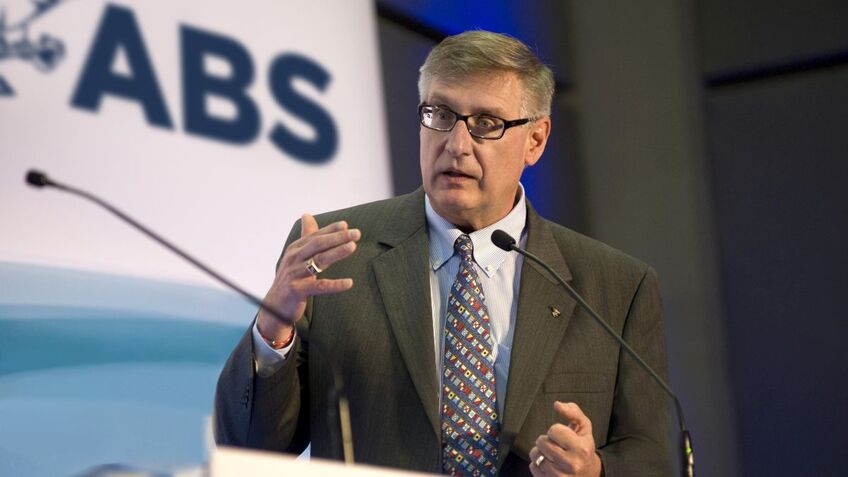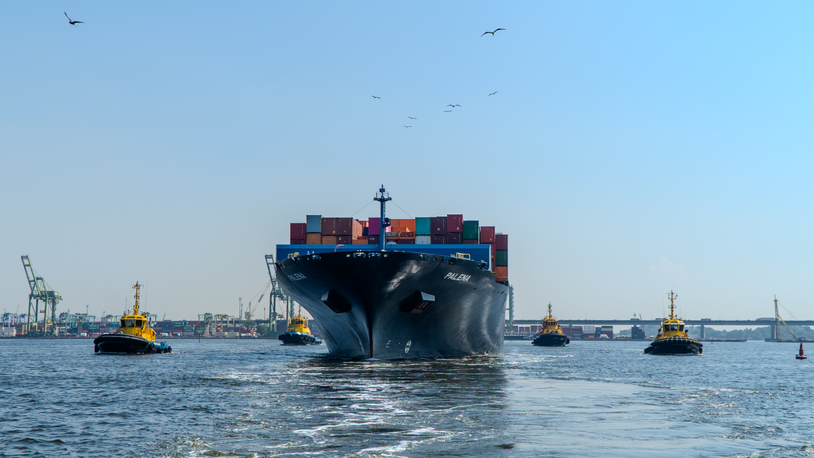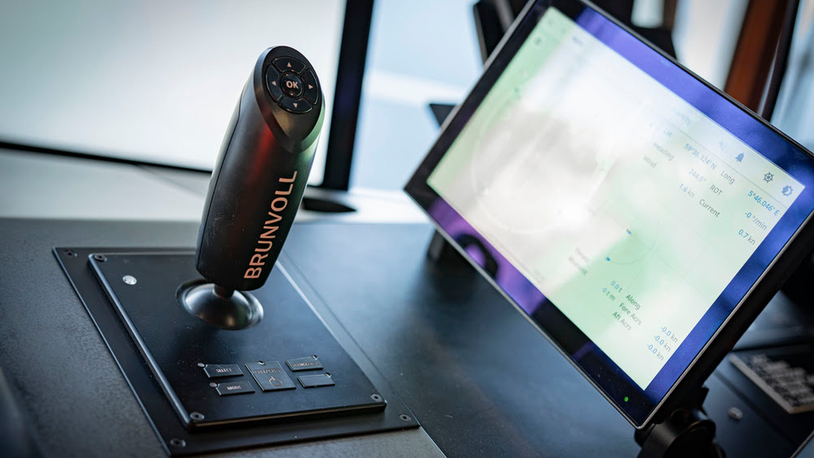Business Sectors
Events
Contents
Defence and passenger applications for waterjets
Fast ferries and coastline defence and security applications continue to dominate the market for waterjet propulsion.
Wärtsilä announced in December that it is supplying waterjets for a fast ferry under construction in Australia. The Incat shipyard in Hobart, Tasmania has specified Wärtsilä waterjets and controls for a new fast ferry, KatExpress 3, being built for Danish operator Mols-Linien. The yard has previously specified Wärtsilä waterjets for a number of fast ferry projects. This latest order was placed in November.
The scope of supply includes four Wärtsilä LJX 1500 SRI waterjets and a Wärtsilä Lipstronic control system. The equipment is scheduled for delivery to the yard in September 2016.
“The strong relationship between Wärtsilä and the Incat yard continues, and this latest order confirms the good co-operation that the two companies enjoy. It also underlines Wärtsilä’s commitment to the Australian market. We are pleased to once again be supplying Wärtsilä waterjets, which provide reliable and efficient propulsion for fast ferry applications,” says Hans Laheij, sales director for Wärtsilä Marine Solutions.
“Incat, and our client Mols-Linien, have continued to be satisfied with the performance of the Wärtsilä waterjets on KatExpress 1 and KatExpress 2 so it was a logical decision to select the Wärtsilä LJX 1500 SRI jets for KatExpress 3,” says Robert Clifford, Incat chairman.
KatExpress 3 is a 109m long catamaran capable of carrying around 1,000 passengers and with capacity for 411 cars or a mixture of trucks, vans and cars. The vessel has a deadweight of 1,000 tonnes. It is expected to be delivered to the owners in March 2017. The newbuilding’s near-sisterships KatExpress 1 and KatExpress 2 are both in service for Mols-Linien and were also built by Incat.
Wärtsilä offers two types of waterjet. For ship speeds exceeding 50 knots a non-axial E-type pump design is available. Below 45 knots axial geometry pumps are preferred, while the Wärtsilä midsize waterjet is designed for ease of installation with the minimum of ship interfaces. Wärtsilä offers the midsize jet complete with intake, compact steering and reversing unit, hydraulics and thrust bearing. All hydraulic or oil-containing parts are located inboard. The midsize waterjet is available from size 510 to 810 – typically 1,000kW to 4,300kW, depending on ship speed.
Rolls-Royce also saw success in the fast ferry market in 2015, announcing at the beginning of the year that it was to supply waterjets and high speed MTU diesel engines for two newbuild aluminium catamaran fast ferries for Chinese ferry operator Zhuhai High-Speed Passenger Ferry Co. The ferries are some of the first to feature the highly efficient Rolls-Royce Steel S71-4 waterjets, indicating the company’s growing presence in the marine market of South China.
Designed by CoCo Yachts in The Netherlands, the vessels were constructed at the AFAI Southern Shipyard and delivered in December. Each ferry is driven by an MTU 16V 4000 M70 engine delivering 2,240kW, which gives the vessels a top speed of 34 knots. The first ferry will serve routes in the Pearl River Delta, between Zhuhai, Shekou and Hong Kong.
On the defence side, one of Rolls-Royce’s contracts in 2015 involved the supply of MTU high speed engines and a suite of waterjet propulsion systems for 17 fast patrol vessels under construction at Turkey’s Ares Shipyard for the Qatar Coast Guard.
The combination of Rolls-Royce MTU diesels and Kamewa waterjets helps the new craft to achieve optimum fuel economy at high speeds. In particular the Kamewa A3 model of waterjet offers high performance up to speeds of around 45 knots.
Speaking at the time, Don Roussinos, Rolls-Royce naval marine president, said: “The Ares Hercules series patrol boats will be the first Qatar Coast Guard craft to feature Rolls-Royce Kamewa waterjets. This is not the first project we have worked on with Ares Shipyard, but it is the largest and most important as it gives strength to our strategic decision to enter the Turkish and Qatari markets.”
The scope of supply for Rolls-Royce is extensive, with a total of 46 engines and waterjets, across three different sizes of craft. MTU 12V 2000 M84 diesel engines and Rolls-Royce Kamewa 50A3 series waterjets will be installed on five 24m Ares 75 Hercules patrol boats and ten of the 34m Ares 110 Hercules design. The two largest craft, the 47m Ares 150 Hercules design, each feature three MTU Series 4000 diesels and twin 71S4 waterjets with B4 boosters.
With power outputs up to 2,060kW, the Kamewa A3 series deliver up to 3 per cent better energy efficiency compared to the earlier model. This, together with a reduced footprint on the vessel, lower weight and lower lifecycle costs, equates to a substantial reduction in fuel costs and CO2 emissions.
In 2016, Rolls-Royce has signed a contract with Finnish company Marine Alutech to provide 28 waterjets for 14 Watercat K13 fast interceptor craft ordered by the Royal Oman Police.
The Watercat K13 has a wide range of operating characteristics but is especially suitable for patrolling, interception and rescue purposes in all weather conditions. Propulsion is provided via two 651kW diesel engines with twin Rolls-Royce Steel Series 32A3 waterjets. The boat has a top speed of over 50 knots and a range exceeding 200 nautical miles, fully loaded.
Niko Haro, Marine Alutech chief executive, said: “Our customers were looking for a fast, agile vessel equipped with proven technology to help in policing the Sultanate. Rolls-Royce Kamewa waterjets are such a technology; highly reliable and with an excellent service support network.”
David Kemp, Rolls-Royce vice president for naval sales, said: “Rolls-Royce Kamewa waterjets contribute significantly to the manoeuvrability, efficiency and performance of these highly capable vessels particularly at speeds in excess of 50 knots. The Kamewa A3 series is up to 3 per cent more energy efficient than earlier models and, together with a reduced footprint on the vessel, lower weight and lower lifecycle costs, can substantially reduce fuel costs and CO2 emissions, making them highly efficient as well as highly effective.”
The boats will be built at the Marine Alutech yard in Finland and are due to be delivered by the end of 2017.
HamiltonJet, meanwhile, has won the bid to supply waterjets for BAE Systems’ 60 boat Pacific 24 rigid inflatable boat (RIB) contract. This is a continuation of the company’s long and successful history with the Pacific RIB boat platform. BAE Systems will build 60 new Pacific 24 RIBs for the UK Navy, after a £13.5 million (US$19.75 million) deal was agreed with the UK Ministry of Defence.
The Pacific 24 Mark-4 will be deployed on Royal Navy ships such as offshore patrol vessels, as well as the new Queen Elizabeth class aircraft carriers due to arrive in Portsmouth in 2017. The RIBs can be deployed from ship or shore at speeds of up to 38 knots as rapid response craft to perform fast rescue, anti-piracy and counter-narcotics missions.
A team of 19 BAE Systems employees started work in early 2016 to build the boats over the next four years at the company’s small boats manufacturing facility at Portsmouth Naval Base.
The fourth generation Pacific 24 RIB is a step up from its predecessors. It features a 276kW twin turbo diesel electronic engine with inbuilt self-diagnostic technology. The boats have also gained Solas accreditation, so they can be used for rescue operations.
Related to this Story
Events
Maritime Environmental Protection Webinar Week
Cyber & Vessel Security Webinar Week
The illusion of safety: what we're getting wrong about crews, tech, and fatigue
Responsible Ship Recycling Forum 2025
© 2024 Riviera Maritime Media Ltd.












